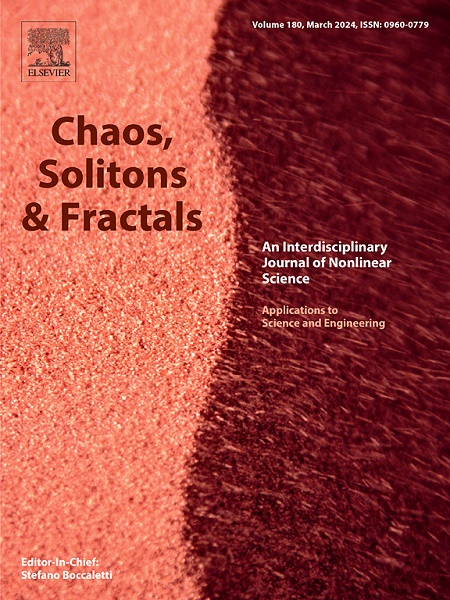基于互耦加降微环谐振器的延时储层计算
IF 5.6
1区 数学
Q1 MATHEMATICS, INTERDISCIPLINARY APPLICATIONS
引用次数: 0
摘要
加滴式硅微环谐振器(MRR)具有功耗低、重量轻、可扩展等显著优势,是光储层计算(ORC)和光芯片领域的研究热点之一。在本文中,我们首次提出了一种新的非线性动态系统,使用顺时针和逆时针光注入的互耦合(MC)加降磁阻。利用基于修正非线性动力学方程的耦合模态理论(CMT)建立的动力学模型,我们进一步构建了一个ORC系统。通过分岔图详细分析了受关键参数影响的不同动力行为和内部物理机制。在此基础上,详细分析了喷射强度、泵功率、喷射延迟时间等关键参数对ORC性能的影响。经过综合分析和优化,提出的ORC预测任务的归一化均方误差(NMSE)为0.4%,非线性信道均衡任务的符号错误率(SER)为0.2%,信噪比为24 dB。通过分析系统输出状态、虚拟节点数量和比例因子对上述任务的影响,我们取得了显著的识别准确率,在MNIST数据集上达到99%,在Fashion-MNIST数据集上达到86.8%。结果和分析强调了掌握所提出模型的动态机制对于实现构建的ORC系统的最佳应用性能的重要性。对所建议的模型的深入理解为集成拓扑的后续开发提供了有价值的见解和灵感。本文章由计算机程序翻译,如有差异,请以英文原文为准。
Time delay reservoir computing based on mutually coupled add-drop microring resonators
Add-drop silicon microring resonator (MRR) has notable advantages in low power consumption, light weight and scalability, making it one of the research hotspots in optical reservoir computing (ORC) and optical chip. In this paper, for the first time, we propose a novel nonlinear dynamic system using mutually coupled (MC) add-drop MRRs with clockwise and counter-clockwise optical injection. Utilizing the proposed dynamical model, which is grounded in modified nonlinear dynamic equations incorporating coupled mode theory (CMT), we further construct an ORC system. Different dynamic behaviors and internal physical mechanisms, affected by key parameters, are analyzed in detail through bifurcation diagrams. Based on this, the effects of key parameters including injection strength, pump power, and injection delay time on the performance of ORC are detailedly analyzed in results. Through comprehensive analysis and optimization, the proposed ORC can achieve the normalized mean square error (NMSE) of 0.4% for the prediction task and the symbol error rate (SER) of 0.2% with SNR of 24 dB for nonlinear channel equalization. By analyzing the effects of the system output state, the number of virtual node, and scaling factor on the above tasks, we achieve remarkable recognition accuracies, attaining 99% on the MNIST dataset and 86.8% on the Fashion-MNIST dataset. The results and analysis underscore the importance of mastering the dynamic mechanism of the proposed model to achieve optimal application performance for constructed ORC systems. An in-depth understanding of the proposed model offers valuable insights and inspiration for the subsequent development of integrated topologies.
求助全文
通过发布文献求助,成功后即可免费获取论文全文。
去求助
来源期刊

Chaos Solitons & Fractals
物理-数学跨学科应用
CiteScore
13.20
自引率
10.30%
发文量
1087
审稿时长
9 months
期刊介绍:
Chaos, Solitons & Fractals strives to establish itself as a premier journal in the interdisciplinary realm of Nonlinear Science, Non-equilibrium, and Complex Phenomena. It welcomes submissions covering a broad spectrum of topics within this field, including dynamics, non-equilibrium processes in physics, chemistry, and geophysics, complex matter and networks, mathematical models, computational biology, applications to quantum and mesoscopic phenomena, fluctuations and random processes, self-organization, and social phenomena.
 求助内容:
求助内容: 应助结果提醒方式:
应助结果提醒方式:


